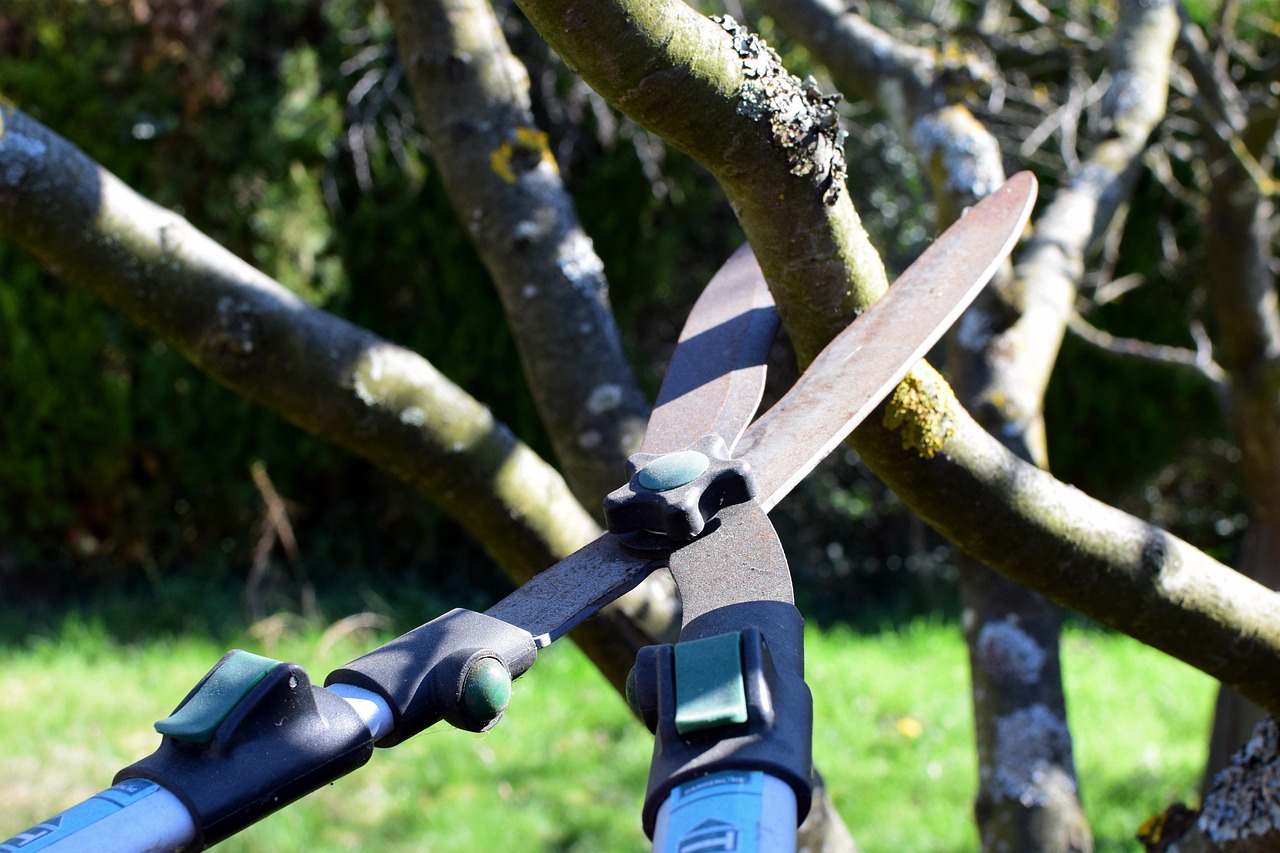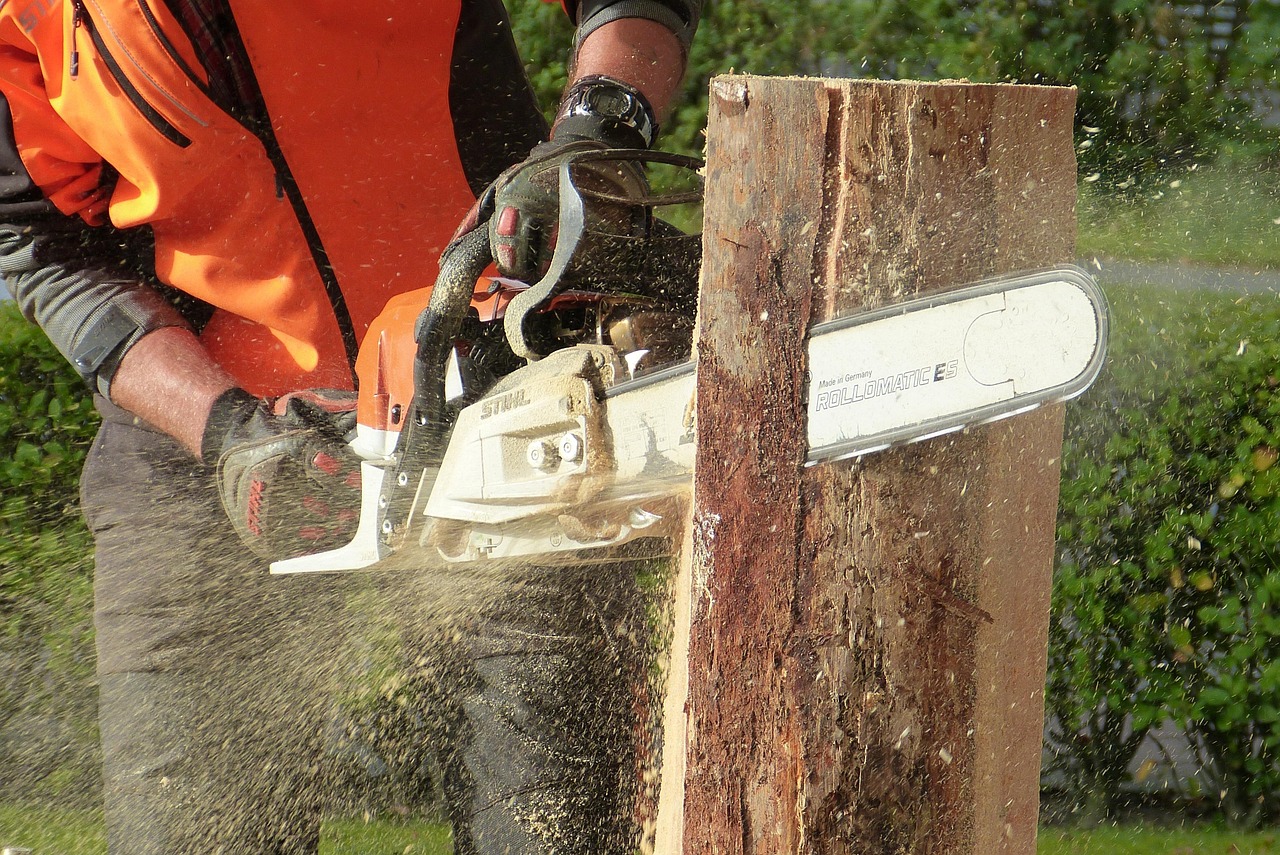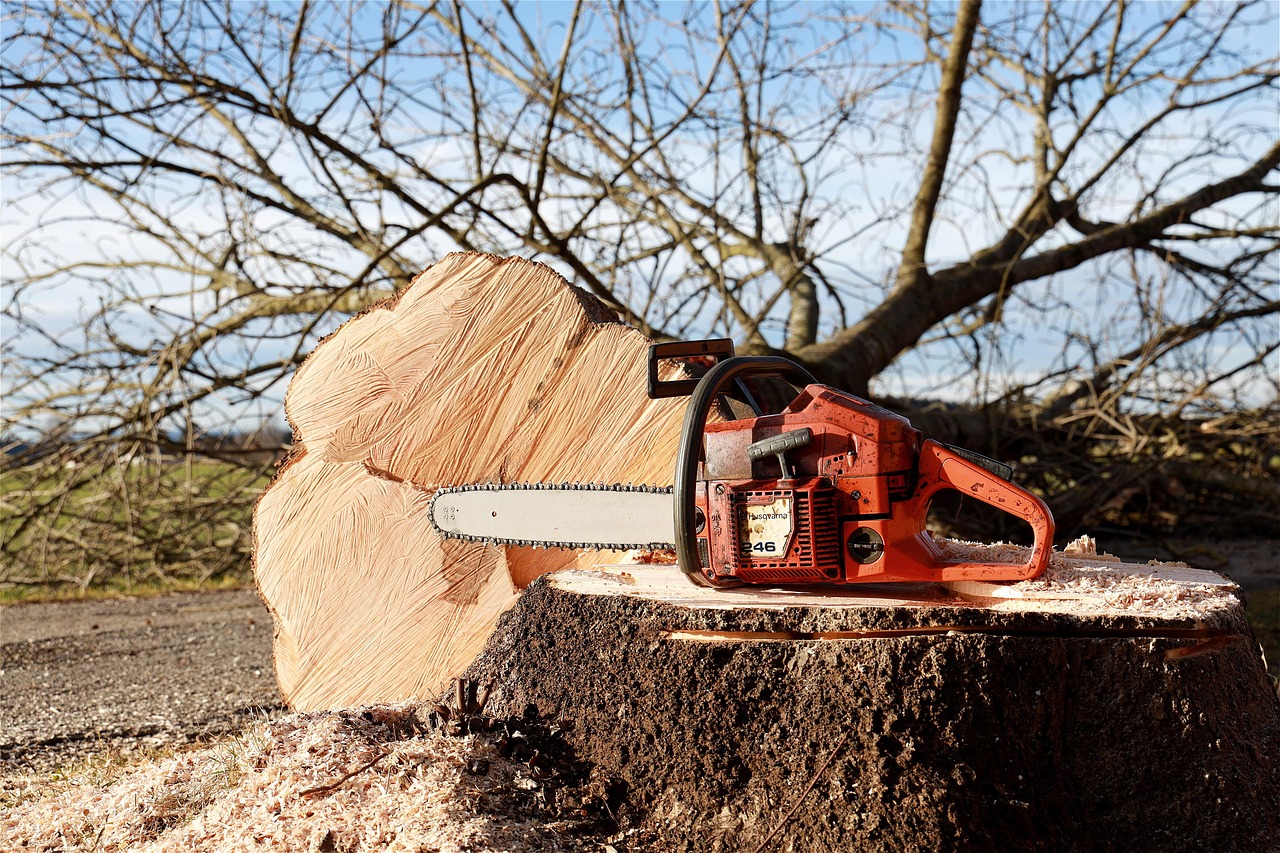Tree pruning around garden statues and ornaments is essential for maintaining aesthetics, ensuring visibility, and promoting healthy plant growth. Proper pruning techniques not only enhance the beauty of your garden but also protect the statues and ornaments from damage caused by overgrown branches.
In many gardens, statues and ornaments serve as focal points. They add character and charm to outdoor spaces. However, when trees grow too close to these decorative elements, they can overshadow them or even cause physical damage. This makes tree pruning a crucial task for any gardener who wants to keep their garden looking its best.

Pruning trees around statues and ornaments involves careful planning and technique. It is important to consider the type of plants in the area, their growth patterns, and how they interact with the surrounding decor. Pruning not only helps to maintain the desired shape of trees but also allows for better light exposure and airflow, which are vital for healthy plant growth.
Understanding Tree Growth Patterns
To effectively prune trees around garden statues and ornaments, one must first understand how trees grow. Different species of trees have varying growth rates and shapes. Here are some key points to consider:
- Growth Rate: Some trees grow quickly while others are slow. Fast-growing trees may need more frequent pruning to manage their size.
- Branch Structure: Understanding which branches are primary and which are secondary helps in making informed pruning decisions.
- Seasonal Growth: Trees have specific seasons for growth. Pruning during the wrong season can damage the plant.
Being aware of these factors allows gardeners to make better decisions regarding when and how much to prune. Regular maintenance can prevent trees from becoming overgrown and ensure that they do not obstruct or damage nearby statues and ornaments.

Tools Needed for Pruning
Having the right tools is essential for effective tree pruning. Here is a list of common tools used in the process:
| Tool | Description | Use |
|---|---|---|
| Pruning Shears | Handheld tools for cutting small branches. | Ideal for precision cuts on smaller plants. |
| Loppers | Larger cutting tool for thicker branches. | Useful for reaching high or thick branches. |
| Saw | For cutting larger limbs. | Necessary for removing heavy branches. |
| Gloves | Protective gear for hands. | Prevents injuries during pruning. |
Using the right tools not only makes the job easier but also ensures cleaner cuts. Clean cuts promote better healing and reduce the risk of disease in trees.
Techniques for Pruning Around Statues and Ornaments
When pruning trees around garden statues and ornaments, specific techniques can help achieve the best results. Here are some effective methods:

- Selective Pruning: Focus on removing only specific branches that interfere with statues or ornaments. This method preserves the natural shape of the tree while improving visibility.
- Thinning: Remove some branches to allow more light to reach the statue or ornament. Thinning out crowded areas can also reduce disease risk.
- Crown Reduction: This technique involves reducing the height or spread of a tree’s canopy. It is particularly useful for overgrown trees that overshadow garden decor.
Each technique serves a purpose and can be chosen based on the situation. It is essential to evaluate the particular needs of your garden before deciding which method to apply.
Remember, safety should always be a priority during pruning. Ensure that you are using tools correctly and wearing protective gear. If a tree is too large or complicated, consider hiring a professional arborist to avoid accidents.
Overall, effective tree pruning can significantly enhance the beauty of your garden. By maintaining proper tree health and appearance, you ensure that your statues and ornaments remain prominent features in the landscape, contributing to a harmonious outdoor environment.

Timing Your Pruning Efforts
Timing is critical when it comes to tree pruning. The success of pruning efforts largely depends on the season and the specific species of tree being pruned. Understanding when to prune can lead to healthier trees and more vibrant garden decor.
Most trees have specific growth cycles. Pruning at the right time can promote healthy growth and flowering. Below are general guidelines for optimal pruning times:
- Winter Pruning: This is often considered the best time to prune many deciduous trees. During winter, trees are dormant, making it easier to see their structure without leaves.
- Spring Pruning: Spring is suitable for light pruning. It can help shape the tree and remove any dead or damaged branches before the growing season begins.
- Summer Pruning: This is ideal for controlling growth and shaping trees. However, excessive summer pruning can stress the tree.
- Fall Pruning: Generally, fall is not recommended for most trees, as it can encourage new growth that may be damaged by winter weather.
Be sure to check specific guidelines for the types of trees in your garden. Different species may have unique needs and optimal pruning times.
Identifying Tree Types and Their Needs
Understanding the different types of trees in your garden is essential for effective pruning. Each type has specific characteristics and growth habits that influence how and when you should prune them.
The following table outlines common tree types, their characteristics, and recommended pruning practices:
| Tree Type | Characteristics | Pruning Recommendations |
|---|---|---|
| Deciduous Trees | Shed leaves in fall; robust growth in spring. | Prune during dormancy in winter or early spring. |
| Evergreen Trees | Maintain foliage year-round; slower growth. | Light pruning in late spring or summer. |
| Flowering Trees | Bloom in spring or summer; require specific timing. | Prune after flowering for spring bloomers; before flowering for summer bloomers. |
| Fruit Trees | Produce fruit; need careful management for yield. | Prune during dormancy; focus on shaping and removing dead wood. |
This information will help you tailor your pruning techniques to the specific needs of your trees, ensuring they remain healthy and visually appealing alongside your garden statues and ornaments.
The Impact of Pruning on Garden Aesthetics
The way you prune trees can dramatically affect the overall aesthetics of your garden. Thoughtful pruning not only enhances the beauty of the trees but also improves the visibility and impact of surrounding ornaments and statues. Here are a few ways pruning influences aesthetics:
- Improved Visibility: Pruning helps maintain clear sightlines to statues and ornaments, preventing them from being obscured by overgrown branches.
- Balanced Composition: Well-pruned trees contribute to a balanced landscape design, allowing elements to complement each other rather than compete for attention.
- Enhanced Shape: Shaping trees through pruning can create a more pleasing silhouette against the backdrop of your garden decor.
- Lighter Canopy: Thinning out branches can allow more sunlight to reach ground-level plants and ornaments, creating a brighter, more inviting space.
The aesthetic benefits of proper tree pruning cannot be overstated. When done correctly, it creates a harmonious environment where all elements of the garden work together beautifully.
Common Mistakes to Avoid When Pruning
Even seasoned gardeners can make mistakes when it comes to pruning trees. Being aware of common pitfalls can help you achieve better results. Here are several mistakes to avoid:
- Over-Pruning: Removing too much foliage can stress the tree and inhibit its growth. Always aim to prune selectively.
- Ignoring Tree Type: Not considering the specific needs of different tree types can lead to improper pruning techniques. Research your trees before starting.
- Poor Timing: Pruning at the wrong time can result in damaged trees or reduced flowering. Understand the optimal seasons for each type of tree.
- Lack of Cleanup: Failing to clean up cut branches and debris can lead to pest problems and diseases in your garden.
Avoiding these mistakes will enable you to maintain healthier trees and ensure that your garden statues and ornaments shine in their best light.
By understanding timing, tree types, and proper techniques, you will be well-equipped to enhance your garden’s beauty through effective tree pruning. Proper care ensures that both your trees and decorative elements thrive together in a harmonious landscape.
Maintaining Statues and Ornaments During Pruning
When pruning trees around garden statues and ornaments, it is essential to protect these decorative elements from potential damage. Pruning can involve the use of sharp tools and the movement of branches that could inadvertently hit or scratch your statues. Here are steps to ensure their safety during the pruning process:
- Cover Statues: Use protective coverings such as tarps or cloths to shield statues and ornaments from falling debris and scratches.
- Clear the Area: Before starting, remove any nearby pots, decorations, or furniture that could be damaged or obstruct your work.
- Assess Branch Locations: Identify which branches pose a risk to your statues and plan your cuts accordingly to minimize any danger.
- Work Slowly: Take your time when pruning near delicate items. Rushing can lead to accidents.
By taking these precautions, you can protect your garden’s decorative elements while effectively pruning nearby trees.
Understanding Tree Health and Growth
Healthy trees contribute significantly to the overall beauty of your garden. A tree’s health can affect not only its own appearance but also the condition of surrounding plants and ornaments. Here are some key aspects to consider:
Signs of Tree Health
Recognizing signs of tree health can help you determine when pruning is necessary. Here are indicators to watch for:
- Leaf Color: Healthy leaves are typically vibrant and green. Yellowing leaves may indicate nutrient deficiencies or stress.
- Branch Structure: Look for strong, upright branches. Drooping or broken branches may require attention.
- Pest Activity: Unusual insect activity or damage can signal underlying health issues that need to be addressed.
- Fungal Growth: The presence of fungi on the tree trunk or branches can indicate decay or disease.
If you notice any of these signs, consult an arborist or extension service for advice on proper care and pruning techniques.
Promoting Growth Through Proper Pruning
Proper tree pruning does not only maintain aesthetics; it also promotes healthy growth. Here are ways pruning supports tree health:
- Encourages Airflow: Thinning out crowded branches allows for better air circulation, reducing the risk of fungal diseases.
- Improves Sunlight Exposure: Pruning helps ensure sunlight reaches all parts of the tree, which is vital for photosynthesis.
- Reduces Weight Stress: Removing heavy or weak branches prevents breakage during storms or high winds, protecting both the tree and nearby decor.
The combination of maintaining tree health through appropriate pruning techniques will enhance your garden’s overall appearance while safeguarding statues and ornaments.
The Role of Mulching in Garden Maintenance
Mulching is a valuable practice that complements tree pruning and overall garden maintenance. It helps retain moisture, suppress weeds, and improve soil quality. Here are some benefits of mulching around trees and garden decor:
- Moisture Retention: Mulch helps maintain soil moisture levels, which is crucial for tree health, especially during dry spells.
- Weed Suppression: A thick layer of mulch can prevent weeds from competing with your trees for nutrients and water.
- Soil Improvement: Organic mulches break down over time, adding nutrients to the soil and improving its structure.
- Aesthetic Appeal: Mulch can improve the visual appeal of your garden by providing a clean and polished look around trees and ornaments.
When mulching, ensure that you keep mulch a few inches away from the base of the tree to prevent rot and other issues.
Environmental Considerations in Pruning
Gardening practices should always consider environmental impacts. Responsible pruning practices can contribute positively to local ecosystems. Here are some eco-friendly tips:
- Use Organic Methods: Opt for organic fertilizers and pest control methods to minimize chemical runoff into local waterways.
- Compost Prunings: Instead of discarding pruned branches, consider composting them to create nutrient-rich soil amendments.
- Nest Preservation: Be mindful of wildlife nests when pruning, especially during breeding seasons. Delay pruning until after nesting periods when possible.
Implementing these environmentally friendly practices not only benefits your garden but also contributes to the health of the local ecosystem.
The Importance of Regular Maintenance
Regular maintenance is essential for keeping both trees and garden decor in optimal condition. Establishing a routine can simplify the process. Below are recommended practices for ongoing care:
- Scheduled Inspections: Regularly inspect your trees for signs of disease or damage, allowing you to address issues before they escalate.
- Consistent Pruning: Develop a pruning schedule based on tree types and growth patterns to promote healthy growth consistently.
- Seasonal Clean-Up: After each season, remove debris around trees to prevent pest infestations and maintain a tidy appearance.
A commitment to regular maintenance will keep your garden thriving, ensuring that both trees and decorative elements enhance the beauty of your space.
Enhancing Your Garden’s Ecosystem
In addition to aesthetics, pruning trees around garden statues and ornaments plays a vital role in enhancing the ecosystem of your garden. Trees are crucial for improving air quality, providing habitats for wildlife, and supporting various plant species. Here are ways pruning contributes positively to the garden ecosystem:
- Encouraging Biodiversity: Healthy trees can support a wide range of insects, birds, and other wildlife. By maintaining tree health through proper pruning, you create an inviting environment for various species.
- Increased Photosynthesis: Pruning allows more sunlight to penetrate the tree canopy, facilitating better photosynthesis. This process is essential for tree vitality and the overall health of your garden.
- Soil Health: Healthy trees contribute to healthier soil by preventing erosion and facilitating nutrient cycling. Pruned trees can better anchor soil, reducing runoff during heavy rains.
- Natural Pest Control: A well-maintained tree can deter pests by promoting healthy growth and reducing overcrowding, which can create a more favorable environment for beneficial insects.
By incorporating these practices into your routine, you help foster a thriving ecosystem that benefits not only your garden but also the surrounding environment.
Utilizing Technology in Garden Maintenance
Modern technology can significantly enhance your gardening efforts, making tree pruning and maintenance more efficient. Here are some ways you can leverage technology:
- Mobile Apps: There are numerous gardening apps available that can help track your pruning schedules, provide reminders, and offer advice tailored to specific plant species.
- Drones: For larger properties, drones can assist in aerial inspections of trees, allowing you to assess tree health and identify issues from above.
- Sensors: Soil moisture sensors can help you monitor the health of your trees and determine when they need watering or additional care.
- Online Resources: Utilize websites and forums dedicated to gardening for the latest tips, techniques, and community support.
Embracing technology can streamline your gardening tasks and enhance your understanding of tree care and maintenance.
The Role of Community in Garden Care
Caring for your garden can also be a community effort. Engaging with neighbors and local gardening groups can provide valuable insights and support. Here are ways to foster community involvement:
- Garden Clubs: Joining a local garden club can connect you with other enthusiasts who share tips and resources on tree care and maintenance.
- Community Workshops: Participate in or organize workshops focused on pruning techniques and general tree care to share knowledge within the community.
- Volunteer Days: Organizing community clean-up or pruning events can help beautify shared spaces while fostering camaraderie among participants.
By working together, communities can enhance their green spaces, creating vibrant environments for everyone to enjoy.
Final Thoughts
Tree pruning around garden statues and ornaments is an essential practice that combines art and science. It not only enhances the visual appeal of your garden but also supports the health of trees and the surrounding ecosystem. Understanding the timing, techniques, and importance of regular maintenance allows you to create a harmonious outdoor space where both trees and decorative elements thrive together.
As you continue to care for your garden, remember the broader implications of your efforts. Your work contributes to air quality improvement, biodiversity promotion, and soil health. By applying modern practices and engaging with your community, you can further enrich your gardening experience.
The beauty of a well-maintained garden is a reflection of dedication, knowledge, and passion. Embrace these principles as you prune, nurture, and enjoy your outdoor sanctuary.
Thank you for exploring the art and science of tree pruning around garden statues and ornaments. May your gardening journey be fruitful and fulfilling!
